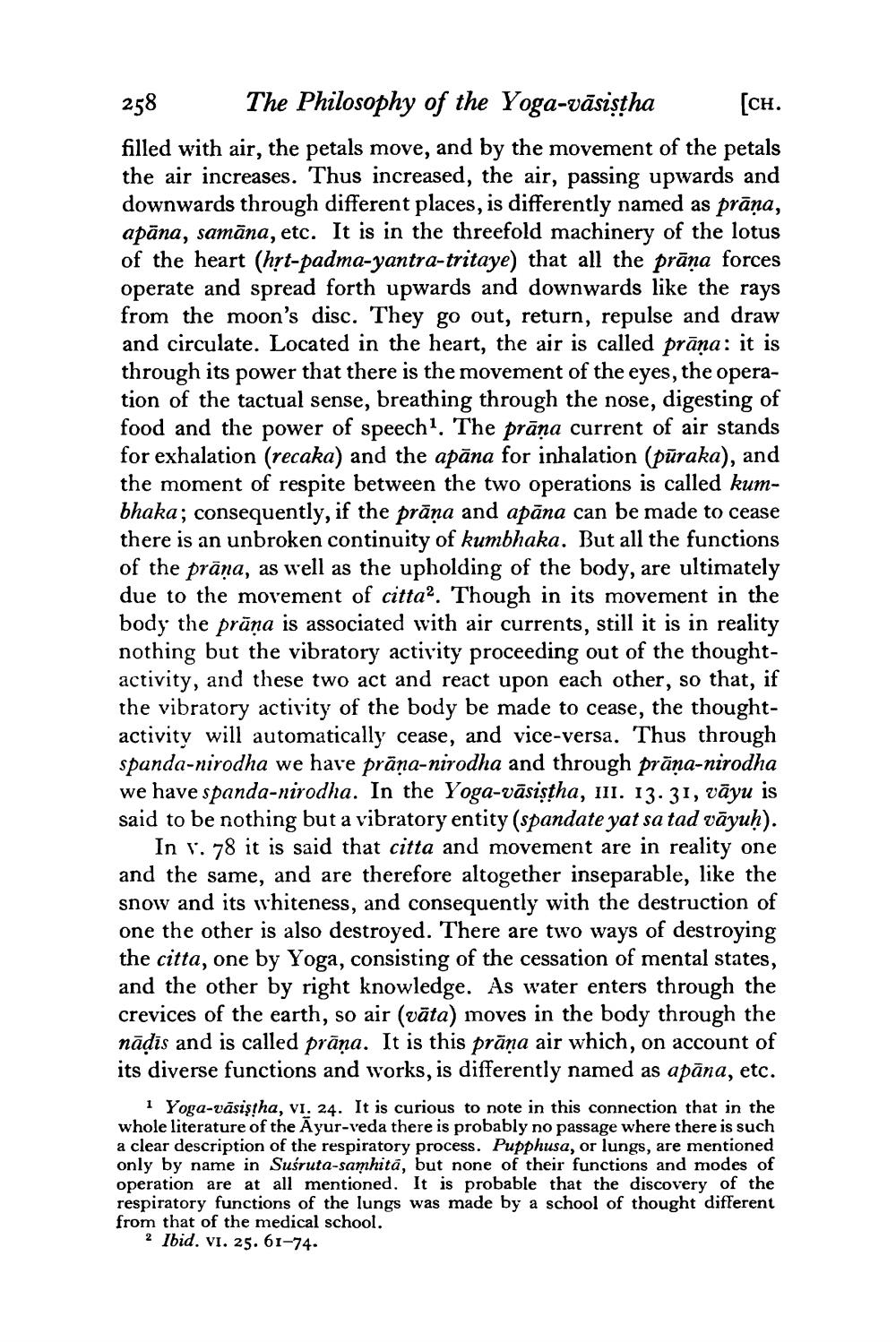________________
258 The Philosophy of the Yoga-vāsistha [CH. filled with air, the petals move, and by the movement of the petals the air increases. Thus increased, the air, passing upwards and downwards through different places, is differently named as prāņa, apāna, samāna, etc. It is in the threefold machinery of the lotus of the heart (hrt-padma-yantra-tritaye) that all the prāna forces operate and spread forth upwards and downwards like the rays from the moon's disc. They go out, return, repulse and draw and circulate. Located in the heart, the air is called prāņa: it is through its power that there is the movement of the eyes, the operation of the tactual sense, breathing through the nose, digesting of food and the power of speech'. The prāņa current of air stands for exhalation (recaka) and the apāna for inhalation (pūraka), and the moment of respite between the two operations is called kumbhaka; consequently, if the prāņa and apāna can be made to cease there is an unbroken continuity of kumbhaka. But all the functions of the prāna, as well as the upholding of the body, are ultimately due to the movement of cittaa. Though in its movement in the body the prāna is associated with air currents, still it is in reality nothing but the vibratory activity proceeding out of the thoughtactivity, and these two act and react upon each other, so that, if the vibratory activity of the body be made to cease, the thoughtactivity will automatically cease, and vice-versa. Thus through spanda-nirodha we have prāna-nirodha and through prāna-nirodha we have spanda-nirodha. In the Yoga-vāsiştha, 111. 13.31, vāyu is said to be nothing but a vibratory entity (spandate yat sa tad vāyuḥ).
In v. 78 it is said that citta and movement are in reality one and the same, and are therefore altogether inseparable, like the snow and its whiteness, and consequently with the destruction of one the other is also destroyed. There are two ways of destroying the citta, one by Yoga, consisting of the cessation of mental states, and the other by right knowledge. As water enters through the crevices of the earth, so air (vāta) moves in the body through the nādis and is called prāņa. It is this prāņa air which, on account of its diverse functions and works, is differently named as apāna, etc.
1 Yoga-vāsiştha, VI. 24. It is curious to note in this connection that in the whole literature of the Ayur-veda there is probably no passage where there is such a clear description of the respiratory process. Pupphusa, or lungs, are mentioned only by name in Susruta-samhita, but none of their functions and modes of operation are at all mentioned. It is probable that the discovery of the respiratory functions of the lungs was made by a school of thought different from that of the medical school.
2 Ibid. vi. 25.61-74.




